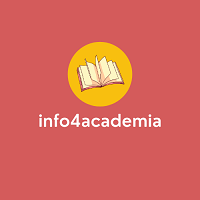Wild Animals as Assets in Conservation Institutions: A Phenomenological Study at Secret Zoo
Abstract
Keywords
Full Text:
PDFReferences
Burritts, R., & Cummings, L. (2002). Accounting for biological assets – The experience of an Australian Conservation Company. Asian Review of Accounting, 10(2), 17-43. doi:10.1108/eb060756.
Creswell, J. W. (2013). Qualitative inquiry & research design: Choosing among five approaches. United States of America: SAGE Publication Inc.
Davey, G. (2006). Relationship between exhibit naturalism, animal visibility and visitor interest in a chinese zoo. Applied Animal Behavior Science. 96(2006), 93-102. doi:10.1016/j.applanim.2005.04.2018
Firmansyah, A., & Listyawati, R. (2018). Evaluasi penerapan aset biologis pada perusahaan sektor peternakan. Substansi, 2(1), 59-76.
Jones, M. J. (2003). Accountimg for biodiversity: Operationalising environmental accounting. Accounting, Auditing & Accountability Journal, 16(5), 762-789. doi:10.1108/09513570310505961.
Maruli, S., & Mita, A. F. (2010). Analisis pendekatan nilai wajar dan nilai historis dalam penilaian aset biologis pada perusahaan agrikultur: Tinjauan kritis rencana adopsi IAS 41. Simposium Nasional Akuntansi XIII: Universitas Indonesia.
Mietule, I., & Arbidane, I. (2018). Problems and solutions of accounting and evaluation of biological assets in Latvia. The International Journal of Entrepreneurship and Sustainability Issues, 6(1), 10-22. doi:10.9770/jesi.2018.6.1(1).
Moleong, L (2000). Metodologi Penelitian Kualitatif. Bandung: PT Remaja Rosdakarya Offset.
Pratiwi, W. (2017). Analisis perlakuan akuntansi aset biologis berbasis PSAK-69 agrikultur Pada PT. Perkebunan Nusantara XII Kalisanen Kabupaten Jember. Prosiding Seminar Nasional dan Call for Paper Ekonomi dan Bisnis (SNAPER-EBIS 2017)- Jember, 27-28 Oktober, 140-150.
PSAK 69. Agrikultur. Jakarta: Ikatan Akuntan Indonesia.
Sayangbatti, D. P., & Baiquni, M. (2013). Motivasi dan persepsi wisatawan tentang daya tarik destinasi terhadap minat kunjungan kembali di Kota Wisata Batu. Jurnal Nasional Pariwisata, 5(20), 126-136.
Starova, M., & Jana. H. (2014). The fair value model for the measurement of biological assets and agricultural produce in The Czech Republic. Procedia Economics and Finance, 12(2014), 213-220. doi:10.1016/S2212-5671(14)00338-4.
Wening, N., Al Hasny, M., & Fitryana, R. (2014). Strategi pemasaran untuk meningkatkan jumlah kunjungan pada obyek wisata Kebun Raya dan Kebun Binatang (KRKB) Gembira Loka di Kota Yogyakarta. Jurnal Kajian Bisnis, 22(1), 110.
Wilmshurst, T., & Williams, B. (2008). Accounting for self-generating and regenerating assets – Meeting the objectives. University of Tasmania School of Accounting & Corporate Governance Working Paper Series, 3(2008).
Yanuarisa, Y., Rosidi., & Irianto, G. (2014). Fenomenologi transendental dalam transparansi dan akuntabilitas performance-based budgeting. Jurnal Aplikasi Manajemen, 12(2), 208-221.
Yilmaz, S., & Alpak, E. M. (2019). Visitor experiences in a naturalistic zoo exhibit. Fresenius Enviromental Bulletin (FEB), 28(1), 44-52.
DOI: https://doi.org/10.32535/ijabim.v0i0.879
Refbacks
- There are currently no refbacks.
Copyright (c) 2020 Winda Ayu Anggraini, Eka Ananta Sidharta, Puji Handayati

This work is licensed under a Creative Commons Attribution-NonCommercial-ShareAlike 4.0 International License.
International Journal of Applied Business and International Management (IJABIM)
ISSN 2614-7432 (Print) | ISSN 2621-2862 (Online)
DOI Prefix: 10.32535 by CrossRef
Published by AIBPM Publisher
JL. Kahuripan No. 9, Hotel Sahid Montana, Malang, Indonesia
Email: journal.ijabim@gmail.com
Phone: +62 341 366222
Website: https://aibpmpublisher.com/
Governed by
Association of International Business and Professional Management
Email: admin@aibpm.org
Website: https://www.aibpm.org/
Licensing Information

The International Journal of Applied Business and International Management (IJABIM) is licensed under a Creative Commons Attribution-NonCommercial-ShareAlike 4.0 International License .












